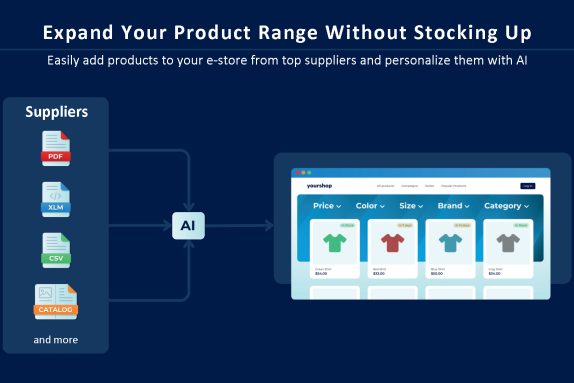The economic downturn encourages people to search for better prices more actively – both private individuals and business clients. One of the most effective ways to thrive in such a situation is by monitoring competitor prices and implementing dynamic pricing strategies. In this comprehensive post, we’ll explore why this is important, share two success stories, discuss the technical aspects, and provide a quick overview of what you can do right away.
Why Is It Important?
Which merchant wouldn’t track competitors’ activities, including their prices and trends over time? Having a good overview of what is happening in the market is essential, not just a convenience. Making decisions without data is like gambling. If you sell products too expensively, you will not be competitive; if too cheaply, you lose profit. What defines “normal” is dictated by the market and consumers.
In the long run, it’s about consistently building customer trust and loyalty. If you claim in large expensive advertising banners that you offer the lowest prices in a particular category, but the first price comparison shows a competitor with a better offer, your promises and reality will diverge.
You can always monitor manually and focus on the most important products/categories/brands, but a fully automated solution helps you discover new market opportunities and gain better insight into competitors’ pricing principles. Data can also be obtained in real-time, allowing you to respond more quickly.
Looking Ahead. Data is gold, and as AI-based data analysis tools become more accessible, even medium-sized online stores can increasingly implement dynamic pricing. We believe this will become increasingly important in the future.
Dynamic Pricing is an Integral Part of Big E-commerce Strategies
It’s safe to say that all large and growing e-commerce stores have established their own price analysis tools and the automation behind them. Publicly, no one reveals “what and how” their systems work, but here are some known success stories from some of the biggest players in e-commerce.
One of the most famous e-commerce giants, Amazon, has built in-house systems to gather pricing data from competitors, including scraping techniques supported by AI. The data is stored in a massive database, with a powerful machine learning engine predicting price fluctuations. Automatic price adjustments are made on average every 10 minutes per product.
Another major user of competitor price monitoring and dynamic pricing strategies is Walmart, aiming for “low price leadership” status through the EDLP (Everyday Low Prices) tactic. Demonstrating the importance of this strategy, Walmart is implementing digital price tags in all of its 2,400 physical stores over the next two years, offering customers a fully omnichannel experience even in brick-and-mortar locations.
Price monitoring is also used by many medium and small-sized companies, and it remains a critical component of business intelligence. Many businesses are successfully implementing this, with good results and who knows, maybe your competitors are already doing this too.
Automatic Pricing – Technical Solution
Technical solutions for price monitoring and dynamic adjustments have been available on the market for quite some time. However, they are usually ready-made solutions that may require additional costs for setup and integration. Let’s be honest – every company has its own pricing logic, and they prefer to keep that knowledge under lock and key.
There are several ready-made solutions available on the market: Competera, Minderest, PricendX, among others. Based on Lumav’s experience, larger online stores with higher volumes are more likely to afford these.
The solution itself consists of three parts – first, price scraping and storing in a database. Then, deciding what to do with this information – whether to simply monitor it for decision-making or build your own automated pricing system (human/IT/AI assessment). Finally, integrating the result with the software where your prices are maintained.
What To Do With This Knowledge?
A client recently shared how they painfully reduced their margins to run a successful campaign, but a larger competitor seems to be closely monitoring their activities, consistently offering prices that are €1 cheaper the next day. Their prices change automatically, just as the client adjusts their own.
It’s the free market, and in a free country, prices are determined by fair competition. But is there any hope of countering such actions? How profitable and ethical is it to do the same?
First. Not everything is so black-and-white. Some customers will always buy from a particular place or, conversely, avoid it due to a bad experience. Price is primarily an argument when you are searching for a product you rarely buy, aiming to get a broad overview and select finalists. Then soft factors come into play, which a knowledgeable online merchant regularly surveys from their target audience.
Second – The price in an online store is the number next to the product. With loyalty programs, there are “invisible” benefits like personal/group-based pricing, discount coupons, bonus points, shipping discounts, app-based prices, etc. People often compare shopping carts to the final stage of the purchase process to assess total cost, including shipping. Multiple tabs are open, and the final decision is made when all possible coupons, pushes, etc., are applied.
Third. There are ways to protect yourself from automated price collection or to confuse competitor engines – using images instead of prices, displaying different numbers, blocking crawling IPs, etc. But if you choose to engage in this battle, be aware that it is a continuous process where the other side is constantly learning and experimenting with new methods.
Conclusion
Every merchant monitors prices, but most still do it manually. Experienced category managers have no problem quickly reviewing the main products on competitors’ sites and making fast business decisions based on that information. However, when the number of products increases, competition intensifies, or ambitions grow, automation is worth considering.
The worst feeling is when your business is declining, and you have no idea why – watching declining sales figures, low margins, and not knowing what to do. Data is the gold of today, and without it, decisions are made blindly or successes are accidental. Implementing price monitoring software alone is not a silver bullet, and a good solution must be built through collaboration between business and IT professionals.
As mentioned at the beginning, this topic is especially important in a struggling economy where customers are looking around more. To make good improvements, you need investment capacity – such as AI-based product enrichment, external assortment, etc.
If you’re interested in the topic and want to find a thoughtful partner, our doors at Lumav are always open for a quick coffee and insightful conversations. Let’s find the best opportunity to grow your e-business – get in touch!




















